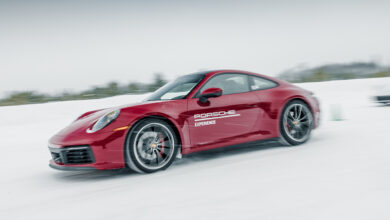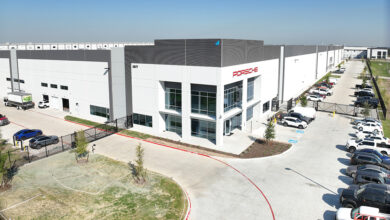World Premiere of the New Porsche 911 Turbo S at IAA Mobility in Munich
Range-topping 911 adopts T-Hybrid tech to make major advances in street & track performance…
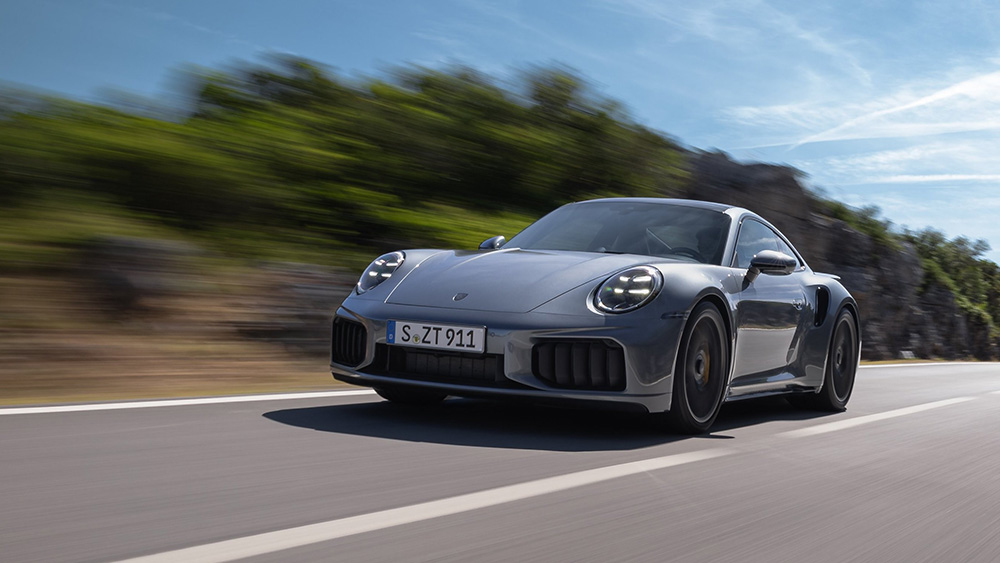
Porsche is presenting the new 2026 911 Turbo S at the IAA Mobility trade show in Munich, Sept. 9-14. Available as a coupe and Cabriolet, the 911 Turbo S debuts with significantly improved performance, a more muscular design, refined aerodynamics, an optimized chassis and an extensive list of optional equipment for personalization, company officials stated in a press release.
“The 911 Turbo S is the most complete and versatile way to drive a Porsche 911. Whether in daily use, on long highway trips or on the track, we have been able to make the new 911 Turbo S even more comfortable, more customizable and at the same time significantly faster than its predecessor,” says Frank Moser, vice president of the 911 and 718 model lines.
The 2026 911 Turbo S Has a Twin-Turbo T-Hybrid Powertrain
The newly developed T-Hybrid powertrain achieves an increase in system output of 61 horsepower over the previous model, making the new 911 Turbo S the most powerful production 911 to date. The maximum torque of the powertrain is 590 lb-ft and is available over a range of 2,300 to 6,000 rpm. Peak horsepower is available between 6,500 and 7,000 rpm.
The T-Hybrid technology, which first appeared last year in the current 911 Carrera GTS, has been developed further for the 911 Turbo S. While a single electric exhaust gas turbocharger (eTurbo) is integrated into the T-Hybrid system in the GTS, two eTurbos are used in the new 911 Turbo S. The turbines and compressors were specifically designed to meet the requirements of the top-of-the-range model, noted the release. The two eTurbos contribute to the increase in power and improve responsiveness.
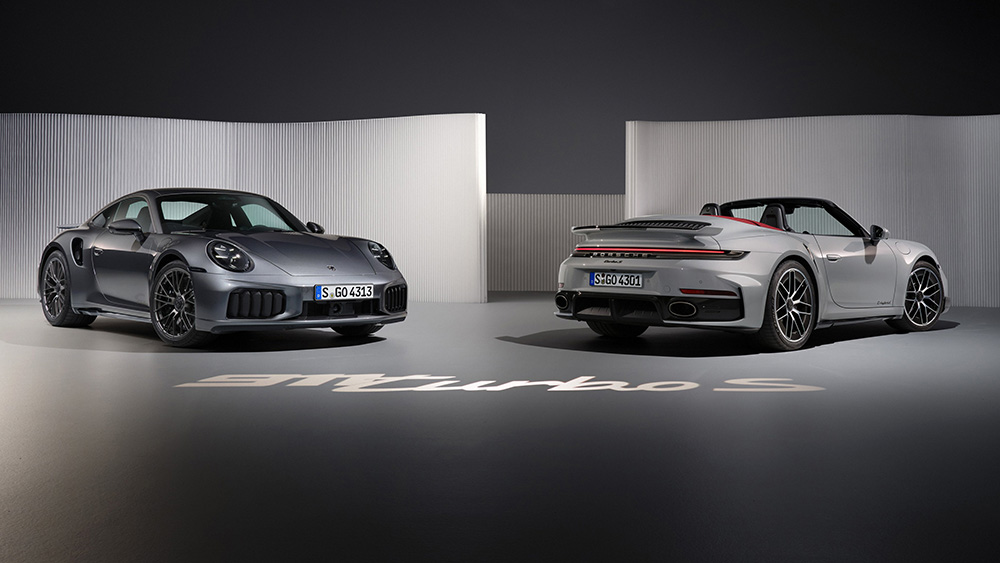
The particularly compact, 1.9-kWh high-voltage battery is the same as the energy storage unit in the 911 Carrera GTS. An eight-speed PDK with an integrated electric motor sends power to the Porsche Traction Management (PTM) all-wheel drive system. Porsche claims the new Turbo S Coupe is capable of a 0-60 mph sprint in 2.4 seconds (-0.2 seconds compared to its predecessor). It takes 8.4 seconds to reach approximately 124 mph, which is an improvement of 0.5 seconds. The top track speed of the new 911 Turbo S is 200 mph.
Additional Weight of the 911 Turbo S Offset By Performance of the Hybrid System
The new 911 Turbo S has a curb weight of 3,829 pounds, which is a 180-pound increase from its predecessor, but Porsche says that is a modest increase considering the additional components of the performance hybrid system. As part of the final development drives conducted in the fall of 2024, a lightly camouflaged 911 Turbo S achieved a lap time of 7:03.92 on the Nürburgring Nordschleife under the supervision of a notary. The time was around 14 seconds quicker than its predecessor.
“You don’t feel the weight gain. On the contrary, the car is much more agile, has more grip and is significantly faster than its predecessor in all relevant sections of the track,” says Porsche brand ambassador Jörg Bergmeister, who was involved in the development and testing of the new 911 Turbo S and set the official lap time.
Brakes & Tires for Optimized Performance
The new Porsche 911 Turbo S includes a new generation of tires that offer improved dry handling while maintaining good wet performance, stated officials. The rear tires now measure 325/30 ZR 21, making them 10 mm wider than those of the previous car. Dimensions for the front tires remain the same as before at 255/35 ZR 20.
The standard Porsche Ceramic Composite Brake (PCCB) system is fitted with new brake pads, the material mixture of which comes from motorsport and is designed with the increased power and associated braking demands in mind. The new pads are useful from both a performance standpoint and in offering improved brake pedal feel. The front brake rotors have a 420-mm diameter as before, while the rear rotors have a 410 mm diameter, which is a 20 mm increase compared to the rear rotors of the previous 911 Turbo S, making it the largest PCCB system that Porsche has ever installed in a two-door model.
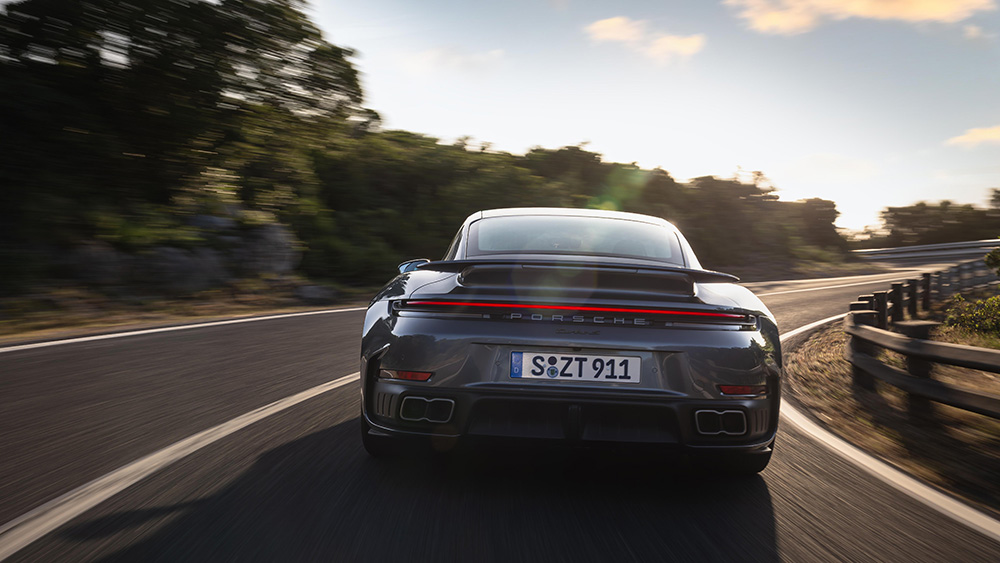
Intelligent Active Aerodynamics
An updated design optimizes cooling for both the powertrain and brakes while delivering enhanced aerodynamics. Active, vertically arranged cooling air flaps in the front of the vehicle and an active front diffuser work in conjunction with an active front spoiler and an extendable, tilting rear wing to reduce drag or lift as the scenario demands. As a result, the drag coefficient of the 911 Turbo S Coupé is reduced by up to 10 percent compared to its predecessor in the most efficient position. In addition, the active aerodynamics aim to improve wet braking behavior: In wet mode, the cooling flaps in the front close to help protect the front brake rotors from excessive water spray.
Chassis for Improved Agility & Stability
An electro-hydraulically controlled Porsche Dynamic Chassis Control (ehPDCC) system is included as standard equipment. The system, also available as an option on the 911 Carrera GTS T-Hybrid, uses the 400-volt electrical system and high-voltage battery to operate. It reduces body roll when changing direction and increases agility when entering and exiting corners, actuating more quickly than the hydraulic PDCC system used in the previous 911 Turbo S.
The system works with cross-connected active coupling rods, in which pressure is built up by oil volume flow depending on the driving situation. Porsche says this improves comfort and agility at the same time. For enhanced everyday usability, an optional front axle lift is available. Because it uses the same 400-volt system as the ehPDCC system, it can lift the front end faster than the system associated with prior models. Continuing in the footsteps of previous 911 Turbo models, front and rear track widths are greater for the Turbo S than the contemporary 911 Carrera models.
A new Sport Exhaust System is included as standard equipment and features a muffler and exhaust tips made of titanium, which save weight while enhancing both aesthetics and sound of the car. Changes to the 3.6-liter boxer engine, which uses asymmetrical timing, result in a sharp, throaty sound, according to the company.
U.S. Market Arrival & Pricing
The new 2026 Porsche 911 Turbo S is available to order and is expected to arrive in U.S. Porsche Centers by spring 2026. The starting MSRP for the coupe is $270,300, and $284,300 for the Cabriolet. Prices exclude a $2,350 delivery fee, processing and handling, taxes, title, registration, other optional or regionally required equipment, dealer charges and any potential tariffs.

